

By Richard Pelleriti, Executive Vice President, RAM Products, Inc., Columbus, Ohio, USA. Reprinted from Ceramic Industry magazine July, 1998 issue.
The RAM Process is the mechanical hydraulic plastic pressing of ceramic shapes with permeable dies typically made of gypsum cement (plaster). Instant release of the pressed shape is obtained by means of fluid pressure forced through the permeable die. A wide range of bodies have been used successfully, from 100% clay to 100% non-plastics with artificial plasticizer added.
Each RAM Die consists of two parts, a male and a female. They are encased in metal die casings and are provided with registration pins for proper alignment. The gypsum cement die is internally reinforced with metal for additional support. The bed of the RAM Press can accommodate a large single die or a combination of several small dies. A single die as large as 2 feet by 2.5 feet can be used.
Since the introduction of the RAM Process in 1946, continuous improvements have been made to the technology. Advances in hydraulic control, programmable logic controllers, and safety features have led to enhanced productivity in numerous applications.
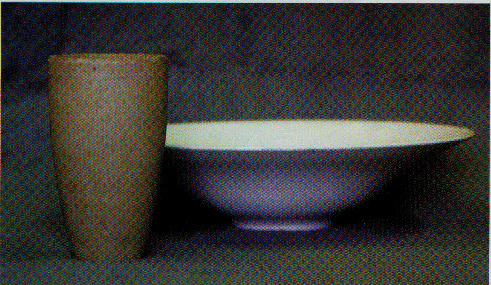
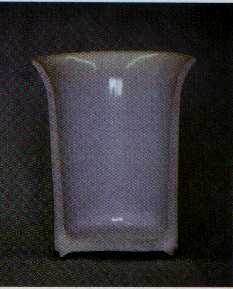
HYDRAULIC CONTROL
The RAM Press has always been fully controlled by the hydraulic system. In the older presses, the hydraulic system ensured high-quality ware but required long cycle times. Today's presses are equipped with finely-tuned hydraulic systems, as well as air system circuits, which provide faster pressing while decreasing loss ratios without giving up quality. What is relatively new is the proportional valve, which gives the operator the ability to fine-tune the closing speed of the press from fast to creep and a variety of options in between.
In the air systems, the proportional valve allows the engineers to design circuits that can be either ramped or immediately charged. For example, if the operator wants partial air on the up cycle to speed the release of a very large and deep item, the valve can be programmed in this manner. The flow can be ramped from zero to 100 psi on command, so that the ware can be slowly released as the press opens. Or the die can be hit with a full charge of air to release the piece at the top of the stroke.
The continued development of the hydraulic systems and the use of proportional valves has also enabled the RAM Press to press deeper (up to 10 inches) and more complicated shapes.
PROGRAMMABLE CONTROL
The PLC, or programmable logic controller, has also significantly advanced the RAM Process. The RAM Press can be built to include a PLC coupled to an operator's station. The press can be set up for operation with the touch of a single screen on the panel vision control module. After the operator touches this screen to indicate the part number to be pressed, the program adjusts the hydraulic pressure for that part, sets the air system for operations specific to this item, and establishes the correct dwell for the ware.
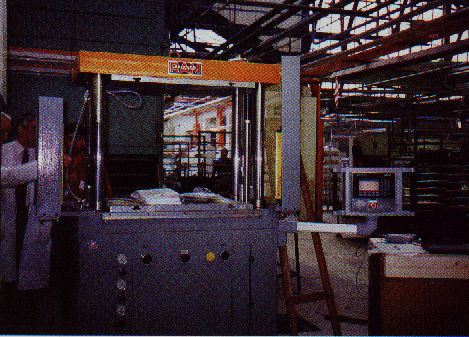
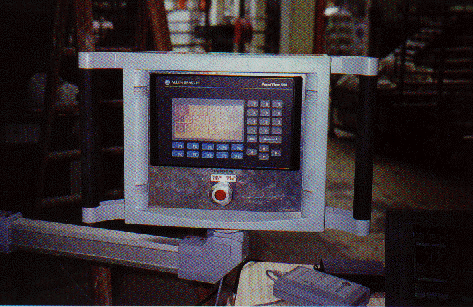
Today's operator sets just two proximity switches, determines the desired thickness and starts pressing. This not only shortens set up time (from the conventional 15 to 20 minutes down to 3 to 5 minutes) but also helps to ensure thickness uniformity from piece to piece since manual adjustments are eliminated.
Programmable controllers used in conjunction with the proportional air valve have also improved standard die making. A computer-driven RAM die purge unit determines when and how much air is incorporated into the working die while it is being made. The mold maker sets up the die, mixes the die material and pours. A sensor from the die purge unit is placed into the die, and the purge cycle begins when the temperature setpoint is reached. Once the die is scraped, the mold maker is free to attend to other duties.
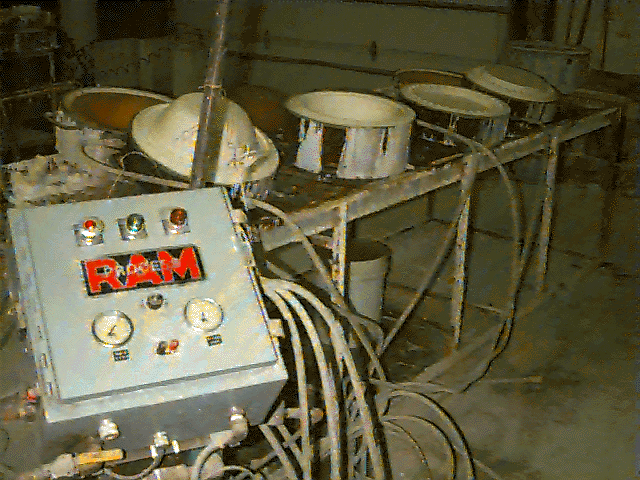
In addition to enhanced productivity, this system provides consistent die quality since another mold can be poured before the end of the shift. The purge unit determines when the plaster is ready to begin the purge cycle and will then increase air flow to the die at the prescribed intervals. Computer control ensures that plaster particles are kept in suspension in the prescribed manner during the entire purge cycle every time. Parameters are predetermined during consultation with each manufacturer and can be adjusted and modified easily.
OTHER IMPROVEMENTS
The combination of electronic proximity switches with light curtain guards have also helped to increase productivity by 20% to 50%, as well as provide more safety. Older presses were not equipped with curtain guards, and the operators were required to press the switches until the cycle was completed as a safety procedure. With light curtain guards, the press automatically stops and opens if someone accidentally places his or her hands inside the press as it is closing. The operators can now turn more of their attention to other duties, such as loading or unloading dryers, which are placed at the sides of the press.
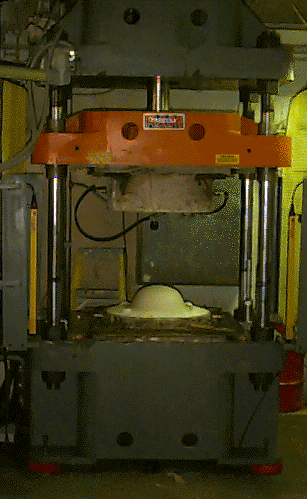
One manufacturer has the press operator stacking ware on a conveyor as it comes from the dryer. The conveyor is part of a finishing system the sponges the seam. Therefore, the press operators are both forming the ware and drying and finishing it as part of their normal routine. Labor requirements for finishing the ware have been reduced dramatically.
Yet another improvement is oil-over-air cooling systems, which have replaced water coolers to address conservation issues. Older presses simply circulated a trickle of water through copper coils in the hydraulic tank. The water entered cool and was expelled into drains after picking up heat from the tank. Today's technology circulates the oil from the tank through coils, which are air-cooled by a fan similar in operation to an automobile's radiator.
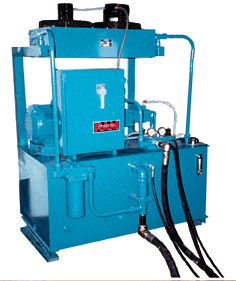
Design and use of these systems requires a knowledge of the working environment of the equipment. Since the systems are designed to reduce heat by a specific number of degrees, the temperature of the air around the unit, as well as the temperature of the oil within the unit must be considered when making this type of installation.
DIE MATERIALS
Over the years, various materials such as porous plastics and steels have been developed to reduce replace the conventional plaster (and cement) based products. Though some of these newer materials were unsuccessful due to improper application, porous synthetic dies have recently been successfully used by several manufacturers.
A synthetic plaster-like material that is under development at RAM Products has been successfully tested. Though this material can produce better part consistency over its natural counterpart, since the time to release the part from the mold remains constant, it can be more costly for small production runs. Cost is being reduced by altering the manufacturing process for this material, including the mixing and firing steps and the initial ingredients. Cleaning materials to unclog pores are also being developed to extend the life of the die.
THE FUTURE
Though there are new forming methods being developed for pottery and similar applications, the RAM Process will continue to be a economical alternative for many products. Improvements are continuing, including the addition of standard tooling for dinner plate and mixing bowl sets.